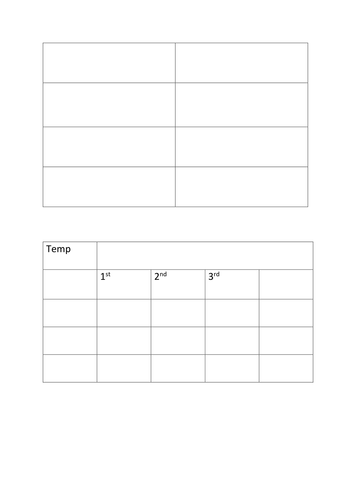243Uploads
121k+Views
56k+Downloads
Chemistry

C5.3 Extraction of metals
AQA GCSE Sciences (9-1)
Chemistry: C5 Chemical changes
Lesson 3: C5.3 Extraction of metals
Based on the Kerboodle Resources
The AQA Kerboodle worksheet are not included so as to be acting within the TES code of conduct.

C8.4 The effect of concentration and pressure
AQA GCSE Sciences (9-1)
Chemistry: C8 Rates and equilibrium
Lesson 4: C8.4 The effect of concentration and pressure
Based on the Kerboodle Resources
The AQA Kerboodle worksheet are not included so as to be acting within the TES code of conduct.

Atomic Theory
In this lesson, learners will learn about the billiard ball model, plum pudding model, nuclear model and Bohr model of the atom.
They will also learn the contribution of James Chadwick and how to distinguish the different sub-atomic particles.

J J Thomson & Plum Pudding Model
Learners will discover how JJ Thomson came up with his Plum Pudding Model and will also see how Millikan discovered the charge of the electron.

Rutherford & The Nuclear Model
In this lesson, learners discover how Rutherford and his students deduced the nuclear model from the alpha scattering experiement.

C6.4 Electrolysis of aqueous solutions
AQA GCSE Sciences (9-1)
Chemistry: C6 Electrolysis
Lesson 4: C6.4 Electrolysis of aqueous solutions
Based on the Kerboodle Resources
The AQA Kerboodle worksheet are not included so as to be acting within the TES code of conduct.

C5.7 Neutralisation
AQA GCSE Sciences (9-1)
Chemistry: C5 Chemical changes
Lesson 7: C5.7 Neutralisation
Based on the Kerboodle Resources
The AQA Kerboodle worksheet are not included so as to be acting within the TES code of conduct.

Recording Data (Introduction lesson 4/4) "Graphs and Tables"
Designed to be the fourth lessons for Year 7s (4/4).
Learning outcomes:
(*) Describe the three different types of data.
(*) Calculate means.
(*) Draw a suitable graph for given measurements.
Students recap the three types of variables and then learn the three types of data (Continuous, Discrete and Categoric).
They are then shown how to fill in a results table (where the dependent and independent variables go).
They learn how to calculate means and how to plot this data onto a graph.
The steps in drawing a graph are laid out in a step by step method (designed to be down together with the whole class).
They are also informed on when to use line or bar charts.








